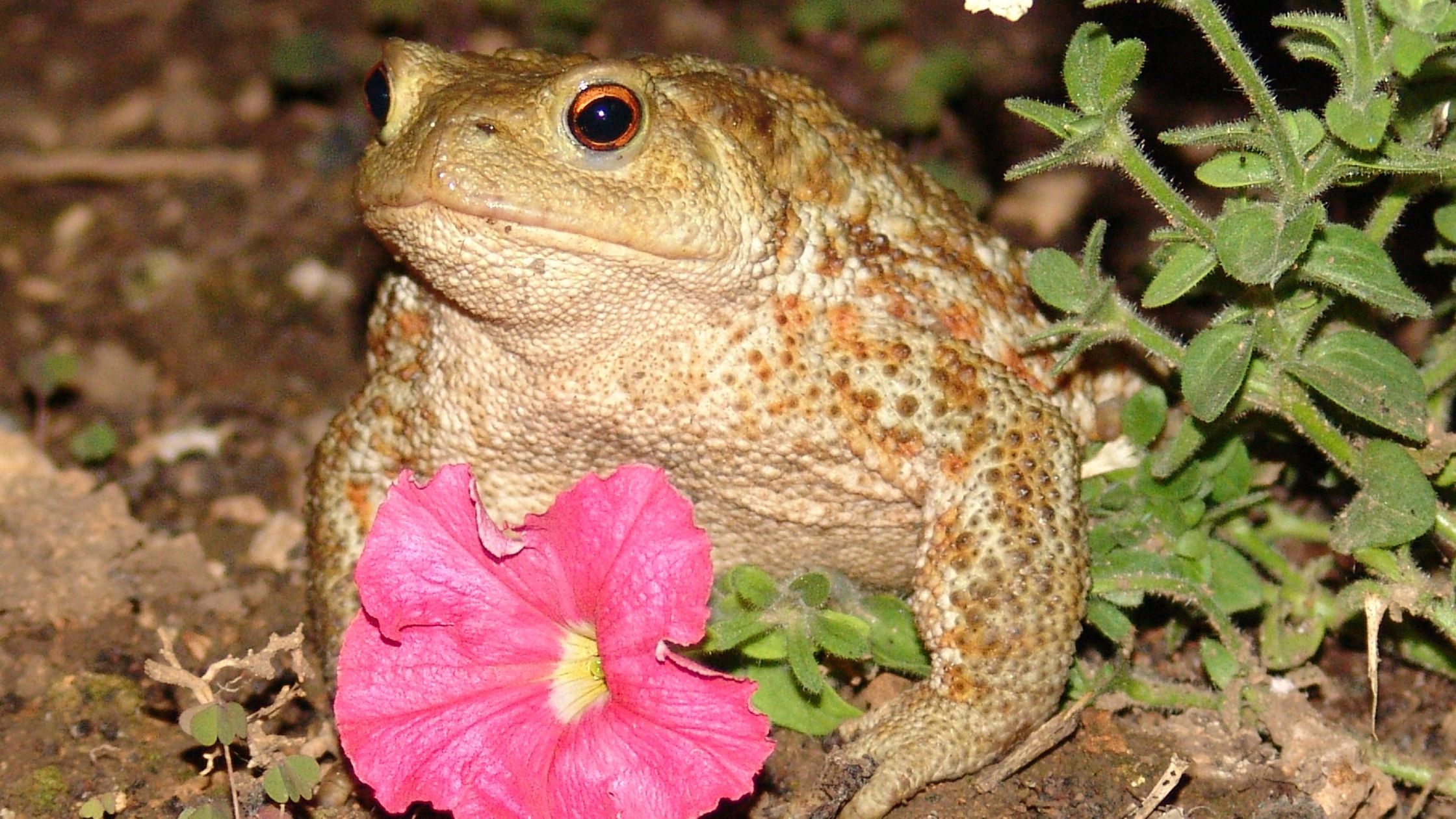
Toads in the Garden: What a Toad Sighting May Mean
Toads are incredibly beneficial for your garden, acting as natural pest control by eating hundreds of insects daily. Myths like “toads cause warts” are false. Unless you’re dealing with a rare invasive species, keeping toads around is one of the easiest, low-effort ways to protect your plants naturally.
Introduction
You’re out watering your garden and spot a squat little toad tucked under your tomato vines. Cute? Creepy? Before you chase it off—or build it a tiny toad house—let’s get into what toads really do for your garden, the science (and fiction) behind their reputation, and whether they deserve an invite or an eviction.
What Are Toads Doing in Your Garden?
Toads are amphibians—land-based cousins of frogs—that love damp, shaded, and insect-rich spaces. Your garden is prime real estate: it offers food, moisture, and cover.
Common toads you might encounter:
-
American Toad (Anaxyrus americanus) – most common in the eastern U.S.
-
Fowler’s Toad (Anaxyrus fowleri) – similar but prefers sandy soils
-
Eastern Spadefoot (Scaphiopus holbrookii) – rarer, prefers temporary pools for breeding
Toads tend to burrow during the heat of the day and come out to hunt at night. If your garden is damp and bug-heavy, it’s toad heaven.
The Benefits of Keeping Toads Around
1. Natural Pest Control
This is the big one. Adult toads eat:
-
Slugs
-
Beetles
-
Cutworms
-
Earwigs
-
Ants
-
Caterpillars
-
Mosquito larvae (if water is nearby)
An adult toad can eat up to 10,000 insects in a summer. If you’re trying to reduce pesticide use, a resident toad is basically a little four-legged exterminator.
2. They’re Low Maintenance
Toads require no feeding, no upkeep, and no special treatment—just avoid using harsh chemical pesticides, which can harm them directly or wipe out their food source.
3. They Indicate a Healthy Garden
Because toads breathe partially through their skin, they’re very sensitive to pollution. If a toad chooses to live in your yard, it’s a good sign your environment is relatively clean and balanced.
The Downsides of Garden Toads
There aren’t many—but here are the few valid concerns:
1. Pets and Toad Toxins
Toads have glands that secrete a mild toxin (bufotoxin) when threatened. It’s usually harmless to humans, but if a curious dog tries to chew on one, it might cause drooling, vomiting, or worse in extreme cases.
-
Tip: Keep pets away from known toad hangouts, especially at night.
2. Rare Risk of Invasive Species
In the U.S., most toads you’ll see are native. But if you live in parts of the South (like Florida), invasive Cane Toads (Rhinella marina) are a risk. These toads are larger, more aggressive, and much more toxic to pets.
-
Rule of thumb: if the toad is the size of a grapefruit, research before making friends.
3. They Might Dig in Delicate Areas
Toads burrow for moisture and may disturb mulch or shallow-rooted plants. This damage is usually minor, but if you’re planting tiny seedlings, keep that in mind.
Myth-Busting: Do Toads Really Give You Warts?
No. 100% myth.
The old tale that touching a toad gives you warts is completely false. Warts are caused by the human papillomavirus (HPV), not animals. Toads just have bumpy, wart-like skin as camouflage and protection.
That said, they do have mild toxins in their skin, so always wash your hands after handling one—just like you would after gardening.
Should Gardeners Encourage Toads?
Yes—if they’re native, they’re one of the best natural allies you can have.
Here’s how to encourage them:
-
Avoid chemical pesticides – These kill the bugs toads eat and can poison toads directly.
-
Create toad shelters – Clay pots on their side, logs, and shady damp spots near mulch are ideal.
-
Provide water – A small, shallow dish of water gives them what they need without inviting mosquitoes.
-
Add native plants – These attract the insects toads eat and give them cover.
When It Makes Sense to Relocate Toads
In very rare cases, you might consider relocating:
-
If you’re in an area with invasive Cane Toads
-
If pets are at risk from licking or biting them
-
If the toad has taken up residence somewhere dangerous (like a dog’s water dish)
When relocating, always move toads to a damp, shaded area near their original spot. Toads are territorial and often don’t survive if moved too far.
FAQ
Do toads bite?
No, toads don’t bite. They eat small insects with sticky tongues and are not aggressive toward humans.
Are frogs and toads the same thing?
Not quite. Toads are more land-based, have drier and bumpier skin, and don’t need to stay near water like frogs do.
Can I buy toads for my garden?
You can, but it’s usually not effective. Toads are territorial and may leave if the habitat isn’t ideal. It’s better to make your garden inviting and let them come naturally.
Is it bad to have a lot of toads?
Nope. More toads just mean more natural pest control. Unless they’re a non-native species, the more the merrier.
What should I do if my dog eats a toad?
Rinse their mouth with water and call your vet. Most native toads aren’t deadly but can cause mild symptoms. Cane toads, however, are an emergency.
Conclusion
Toads are not just harmless garden guests—they’re incredibly helpful allies in maintaining a healthy, low-pesticide environment. They eat pests, indicate ecological health, and require no maintenance from you. Sure, they might look a little weird, but their benefits far outweigh the myths. Unless you’ve got invasive species or curious pets, toads are worth keeping around.




No Comments
Sorry, the comment form is closed at this time.